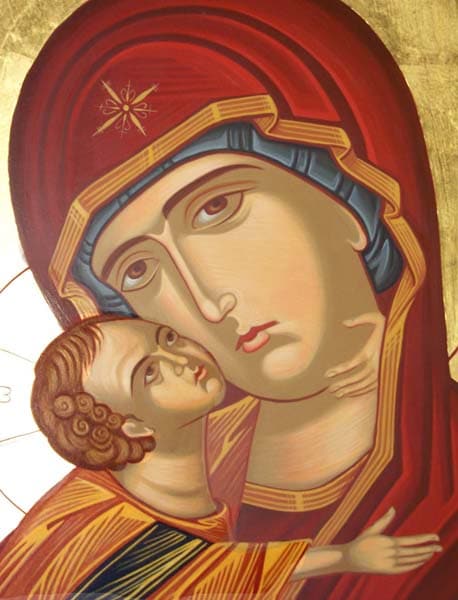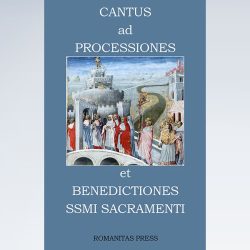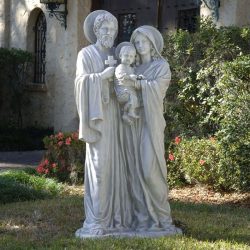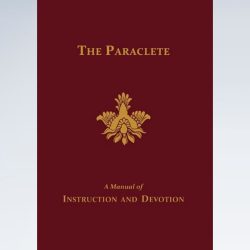From “The True Devotion to the Blessed Virgin“
by Saint Louis-Marie De Montfort.
After having explained and condemned false devotions to the Blessed Virgin we shall now briefly describe what true devotion is. It is interior, trustful, holy, constant and disinterested.
Marks of Authentic Devotion to Our Lady
First, true devotion to our Lady is interior, that is, it comes from within the mind and the heart and follows from the esteem in which we hold her, the high regard we have for her greatness, and the love we bear her.
Second, it is trustful, that is to say, it fills us with confidence in the Blessed Virgin, the confidence that a child has for its loving Mother. It prompts us to go to her in every need of body and soul with great simplicity, trust and affection. We implore our Mother’s help always, everywhere, and for everything. We pray to her to be enlightened in our doubts, to be put back on the right path when we go astray, to be protected when we are tempted, to be strengthened when we are weakening, to be lifted up when we fall into sin, to be encouraged when we are losing heart, to be rid of our scruples, to be consoled in the trials, crosses and disappointments of life. Finally, in all our afflictions of body and soul, we naturally turn to Mary for help, with never a fear of importuning her or displeasing our Lord.
Third, true devotion to our Lady is holy, that is, it leads us to avoid sin and to imitate the virtues of Mary. Her ten principal virtues are: deep humility, lively faith, blind obedience, unceasing prayer, constant self-denial, surpassing purity, ardent love, heroic patience, angelic kindness, and heavenly wisdom.
Fourth, true devotion to our Lady is constant. It strengthens us in our desire to do good and prevents us from giving up our devotional practices too easily. It gives us the courage to oppose the fashions and maxims of the world, the vexations and unruly inclinations of the flesh and the temptations of the devil. Thus a person truly devoted to our Blessed Lady is not changeable, fretful, scrupulous or timid. We do not say however that such a person never sins or that his sensible feelings of devotion never change. When he has fallen, he stretches out his hand to his Blessed Mother and rises again. If he loses all taste and feeling for devotion, he is not at all upset because a good and faithful servant of Mary is guided in his life by faith in Jesus and Mary, and not by feelings.
Fifth, true devotion to Mary is disinterested. It inspires us to seek God alone in his Blessed Mother and not ourselves. The true subject of Mary does not serve his illustrious Queen for selfish gain. He does not serve her for temporal or eternal well-being but simply and solely because she has the right to be served and God alone in her. He loves her not so much because she is good to him or because he expects something from her, but simply because she is lovable. That is why he loves and serves her just as faithfully in weariness and dryness of soul as in sweet and sensible fervour. He loves her as much on Calvary as at Cana. How pleasing and precious in the sight of God and his holy Mother must these servants of Mary be, who serve her without any self-seeking. How rare they are nowadays! It is to increase their number that I have taken up my pen to write down what I have been teaching with success both publicly and in private in my missions for many years.
I have already said many things about the Blessed Virgin and, as I am trying to fashion a true servant of Mary and a true disciple of Jesus, I have still a great deal to say, although through ignorance, inability, and lack of time, I shall leave infinitely more unsaid.
But my labour will be well rewarded if this little book falls into the hands of a noble soul, a child of God and of Mary, born not of blood nor the will of the flesh nor of the will of man. My time will be well spent if, by the grace of the Holy Spirit, after having read this book he is convinced of the supreme value of the solid devotion to Mary I am about to describe. If I thought that my guilty blood could help the reader to accept in his heart the truths that I set down in honour of my dear Mother and Queen, I, her most unworthy child and slave, would use it instead of ink to write these words. I would hope to find faithful souls who, by their perseverance in the devotion I teach, will repay her for the loss she has suffered through my ingratitude and infidelity.
I feel more than ever inspired to believe and expect the complete fulfilment of the desire that is deeply engraved on my heart and what I have prayed to God for over many years, namely, that in the near or distant future the Blessed Virgin will have more children, servants and slaves of love than ever before, and that through them Jesus, my dear Lord, will reign more than ever in the hearts of men.
I clearly foresee that raging beasts will come in fury to tear to pieces with their diabolical teeth this little book and the one the Holy Spirit made use of to write it, or they will cause it at least to lie hidden in the darkness and silence of a chest and so prevent it from seeing the light of day. They will even attack and persecute those who read it and put into practice what it contains. But no matter! So much the better! It even gives me encouragement to hope for great success at the prospect of a mighty legion of brave and valiant soldiers of Jesus and Mary, both men and women, who will fight the devil, the world, and corrupt nature in the perilous times that are sure to come.
“Let the reader understand. Let him accept this teaching who can.”
Principal practices of devotion to Mary
There are several interior practices of true devotion to the Blessed Virgin. Here briefly are the main ones:
- Honouring her, as the worthy Mother of God, by the cult of hyperdulia, that is, esteeming and honouring her more than all the other saints as the masterpiece of grace and the foremost in holiness after Jesus Christ, true God and true man.
- Meditating on her virtues, her privileges and her actions.
- Contemplating her sublime dignity.
- Offering to her acts of love, praise and gratitude.
- Invoking her with a joyful heart.
- Offering ourselves to her and uniting ourselves to her.
- Doing everything to please her.
- Beginning, carrying out and completing our actions through her, in her, with her, and for her in order to do them through Jesus, in Jesus, with Jesus, and for Jesus, our last end. We shall explain this last practice later.
True devotion to our Lady has also several exterior practices. Here are the principal ones:
(1) Enrolling in her confraternities and joining her sodalities.
(2) Joining religious orders dedicated to her.
(3) Making her privileges known and appreciated.
(4) Giving alms, fasting, performing interior and exterior acts of self-denial in her honour.
(5) Carrying such signs of devotion to her as the rosary, the scapular, or a little chain.
(6) Reciting with attention, devotion and reverence the fifteen decades of the Rosary in honour of the fifteen principal mysteries of our Lord, or at least five decades in honour of the Joyful mysteries: the Annunciation, the Visitation, the Birth of our Lord, the Purification, the Finding of the Child Jesus in the temple; or the Sorrowful mysteries: the Agony in the Garden, the Scourging, the Crowning with thorns, the Carrying of the Cross, and the Crucifixion; or the Glorious mysteries: The Resurrection of our Lord, the Ascension, the Descent of the Holy Spirit, the Assumption of our Lady, body and soul, into heaven, the Crowning of Mary by the Blessed Trinity.
One may also choose any of the following prayers: the Rosary of six or seven decades in honour of the years our Lady is believed to have spent on earth; the Little Crown of the Blessed Virgin in honour of her crown of twelve stars or privileges; the Little Office of our Lady so widely accepted and recited in the Church; the Little Psalter of the Blessed Virgin, composed in her honour by St. Bonaventure, which is so heart-warming, and so devotional that you cannot recite it without being moved by it; the fourteen Our Fathers and Hail Marys in honour of her fourteen joys. There are various other prayers and hymns of the Church, such as, the hymns of the liturgical seasons, the Ave Maris Stella, the O Gloriosa Domina; the Magnificat and other prayers which are found in all prayer-books.
(7) Singing hymns to her or teaching others to sing them.
(8) Genuflecting or bowing to her each morning while saying for example sixty or a hundred times, “Hail Mary, Virgin most faithful”, so that through her intercession with God we may faithfully correspond with his graces throughout the day; and in the evening saying “Hail Mary, Mother of Mercy”, asking her to obtain God’s pardon for the sins we have committed during the day.
(9) Taking charge of her confraternities, decorating her altars, crowning and adorning her statues.
(10) Carrying her statues or having others carry them in procession, or keeping a small one on one’s person as an effective protection against the evil one.
(11) Having statues made of her, or her name engraved and placed on the walls of churches or houses and on the gates and entrances of towns, churches and houses.
(12) Solemnly giving oneself to her by a special consecration.
PART I: Marks of False Devotion to Virgin Mary.

VIRGÓ SACRÁTA is a Christian mission-driven online resource and shop inspired from the beauty of Catholic faith, tradition, and arts. Our mission is to “Restore All Things to Christ!”, in continuing the legacy of Pope St. Pius X under the patronage of the Blessed Virgin Mary. “Who is she that cometh forth as the morning rising, fair as the moon, bright as the sun, terrible as an army set in battle array?” O Mary, conceived without sin, pray for us who have recourse to Thee.














